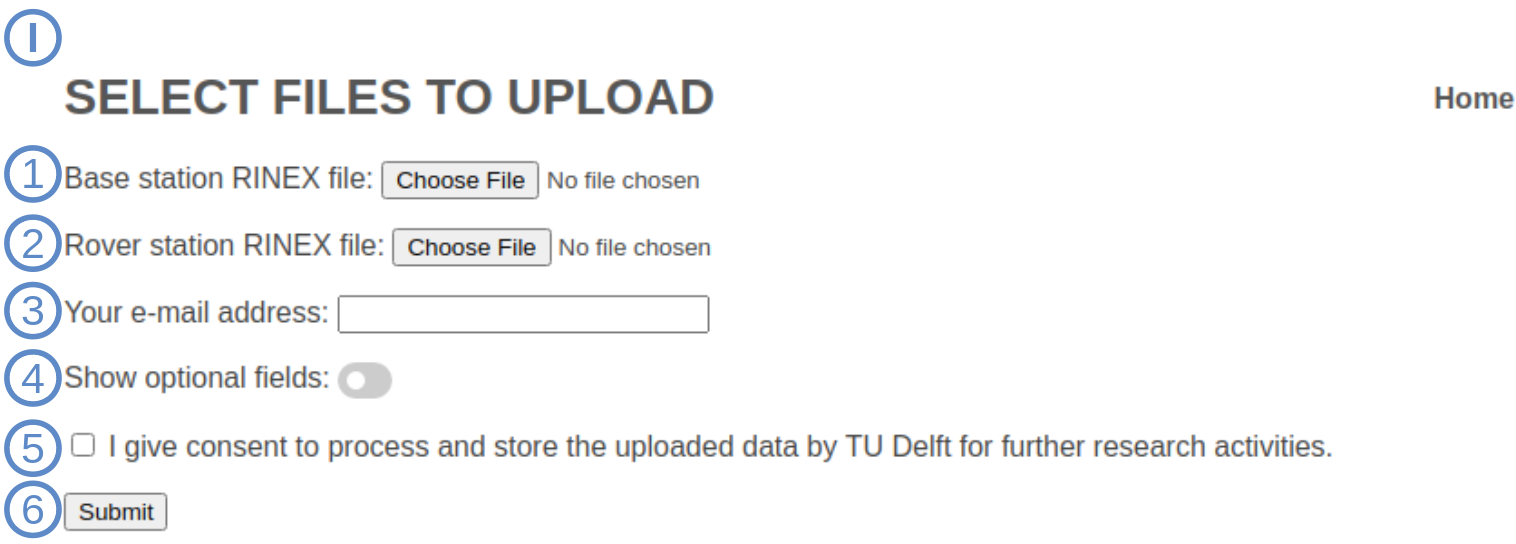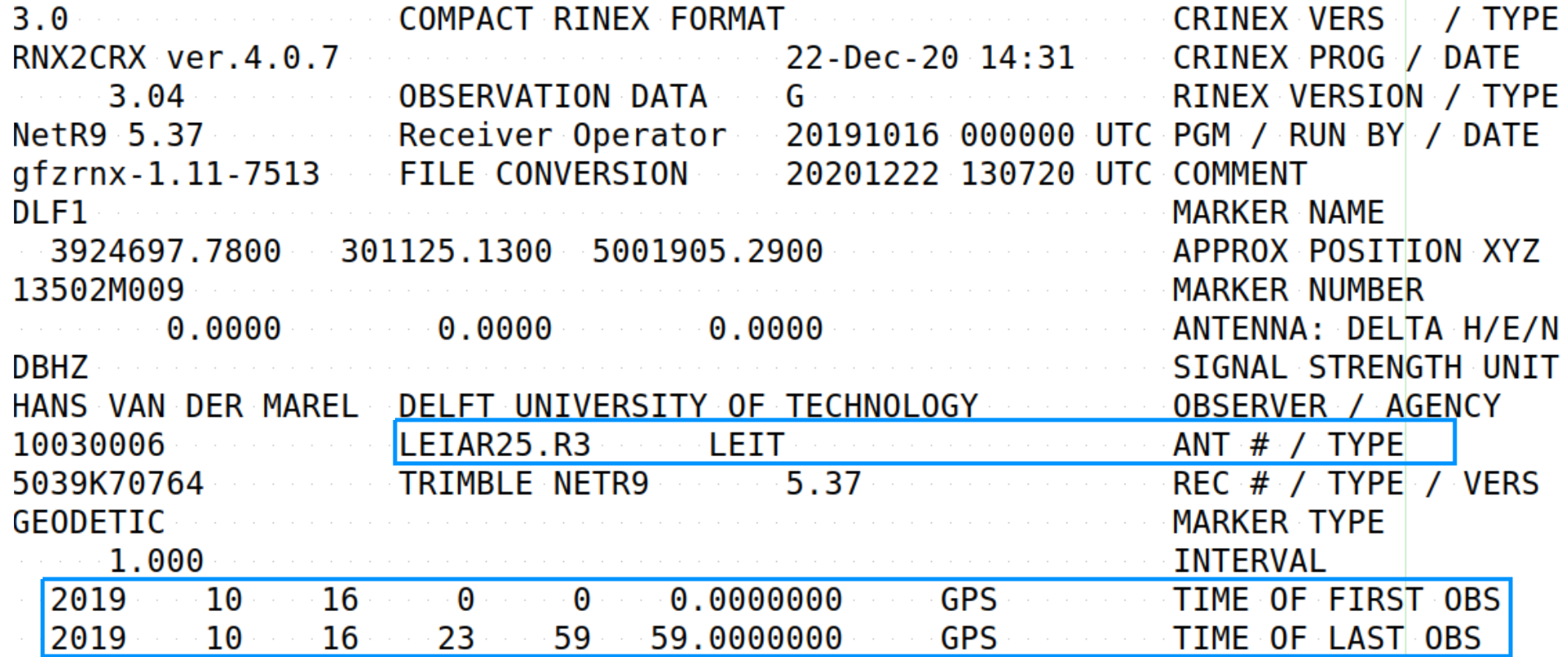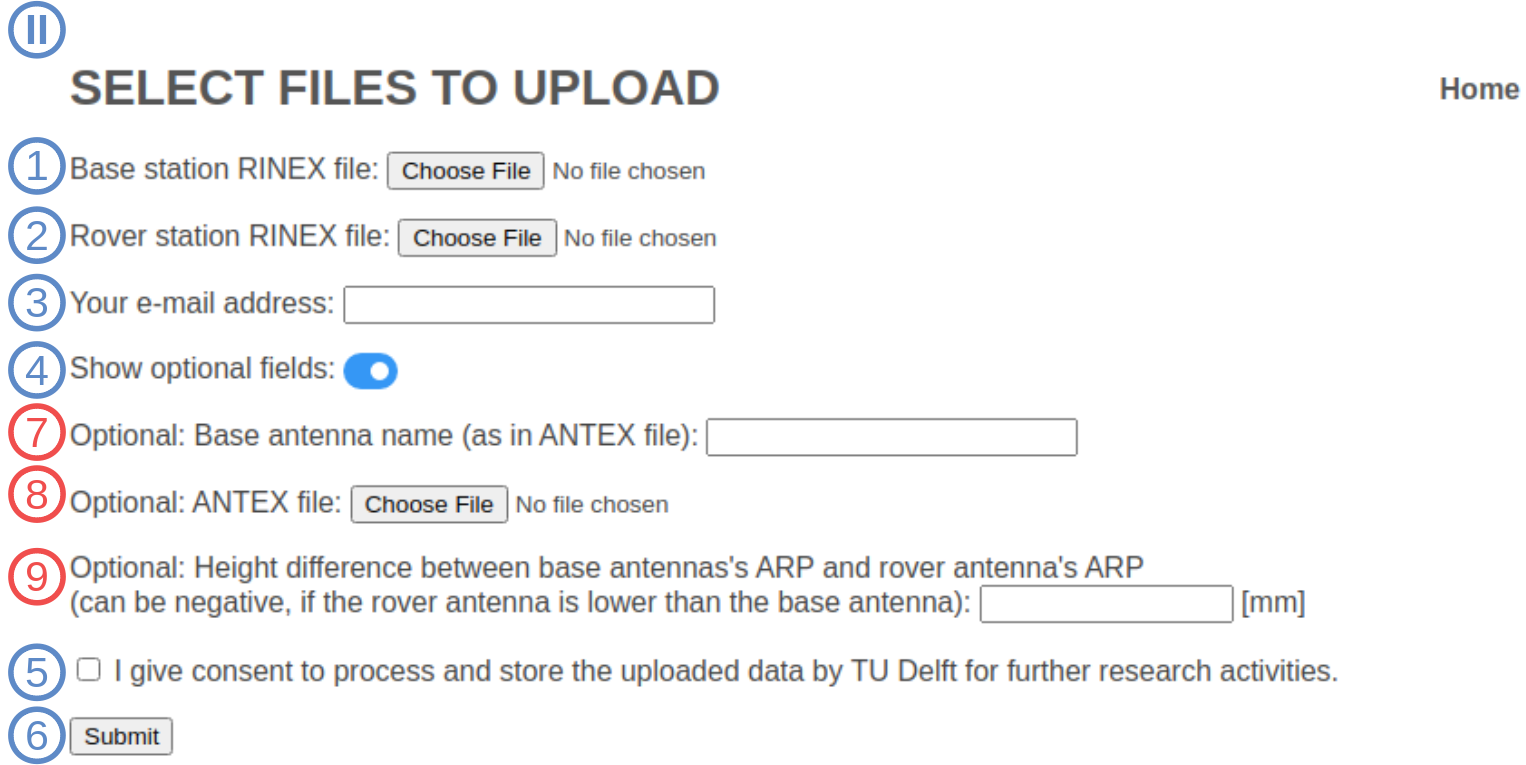The following notes explain the usage of the upload tool. Instructions and examples are given for some points.
The basic usage is explained with the use case I (points 1-6). Case II (points 7-9) show the advanced options.
Generally, please be aware that depending on your internet connection, the upload can take a while (you should see the status of the upload progress in your browser).
Case I

1 & 2: Base and Rover RINEX file upload
Here you select your base (1) and rover (2) files.
You can upload them as compressed CRX files, but they must be formatted RINEX3 files.
Both files must be from the same day and contain a maximum of one full observation day
The sampling interval should be 1Hz at maximum.
Multi GNSS observations can be included, however, only GPS will be used at this point.
Please note that allowed observation types are: C1C,C2W,C2L,C2X,D1C,D2W,D2L,D2X,L1C,L2W,L2L,L2X,S1C,S2W,S2L,S2X.
Both RINEX files should be well formatted and must contain header information (e.g. antenna name etc.). See this example:

Where the marked areas are most important to be present.
3: Your e-mail address
Please enter a valid email address. The result / status report if something went wrong will be send to you.
4: Show optional fields
Enables the optional fields. See points 7, 8 and 9 for explanations.
5: Consent
You are giving consent to use your submitted files by TU Delft for research purposes.
6: Submit
Click on Submit to send your data to our server. Please note that this might take a while. You will see a notification on your browser when the upload is finished.
Case II

7: Base antenna name
If your RINEX header of your base station (1) does not contain the antenna name, or a different antenna should be used, you can specify this here.
Please note that exactly the same antenna name must be in the IGS I14.ATX ANTEX file or in the self-provided ANTEX file (see point 8).
8: Own ANTEX file
Here you can upload your own ANTEX file that should be used for your base station. Again, please be sure to specify the correct antenna name.
9: ARP to ARP height difference
If you know the exact height difference between your base (1) ARP (Antenna Reference Point) and the rover (2) ARP, you can specify it here. We use it to determine the PCO (Phase Center Offset) of your rover (2) antenna.
You can start your upload procedure here: Upload RINEX files
Feel free to contact us via A.Krietemeyer@tudelft.nl if you have any questions or remarks.